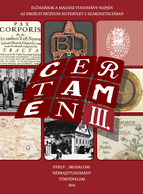
Képmelléklet
List of illustrations to the articles of the following authors: Pozsony Ferenc, T. Szabó Csilla, Tőtős Áron, Ferenczi Szilárd, Wellmann László, Murádin János Kristóf.
More...We kindly inform you that, as long as the subject affiliation of our 300.000+ articles is in progress, you might get unsufficient or no results on your third level or second level search. In this case, please broaden your search criteria.

List of illustrations to the articles of the following authors: Pozsony Ferenc, T. Szabó Csilla, Tőtős Áron, Ferenczi Szilárd, Wellmann László, Murádin János Kristóf.
More...
This glossary covers the most recurrent terminologies of this issue. These terms are considered keywords for the World-Systems Analysis of the current Hungarian social relations. Some of them (such as household or regime change) are common terms that are nevertheless used in this issue in specific ways. A second type (such as capital) are used by critical social scientists in various ways, thus it is worthwhile to clarify how his issue operates with them. A third group consists of terms (such as semi-periphery) that comprise key concepts of World-Systems Analysis.
More...
In my paper, I look at the gender regime and “women’s policy” after 2008 in the context of the history of the integration of female formal and informal labour into society. I show that the productive and reproductive labour performed by women has integrated into society in different ways in different historical periods, according to way in which Hungary integrated into the world system. I argue that when looking at the gender regime and “women’s policy” after 2008, in addition to the rearrangement directly caused by the crisis, we also need to consider the demographic downturn that has been continuous from the 1950s, the abortion discourse attached to this, as well as the downturn of the world economy from the 1970s. We need to consider the way in which Hungary formally reintegrated into the world system in a dependent, semi-peripheral position during the regime change.
More...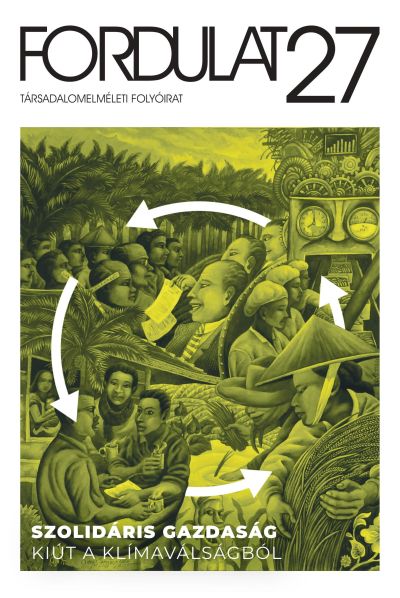
By food sovereignty we mean everyday practices and political strategies that enable communities to organize food production in a socially and ecologically sustainable, democratica and resilient way – as opposed to the profit-driven, unsustainable practices of the global industrial food production. All approaches of food sovereignty (bottom up or top down, coordinated by the market, the state or by civil society) consider food as commons, and their aim is to produce and distribute food in a democratic way.
More...
Hangya, a largely successful cooperative network in Hungary, active during the first half of the 20th century is one of the most spectacular stories from the history of the Hungarian cooperative movement. Hangya’s story is appalling mostly because of two reasons: first, because it established a vast cooperative network in only a couple of decades; and second, because this was achieved in cooperation between the small peasantry and members of the political and economic elites of the time. In this paper we analyse the nature of this odd coalition. We argue that Hangya’s activity played an active part in the crisis management and modernization efforts of the pre-WWII governments, representing the interests of large estates and large capital.
More...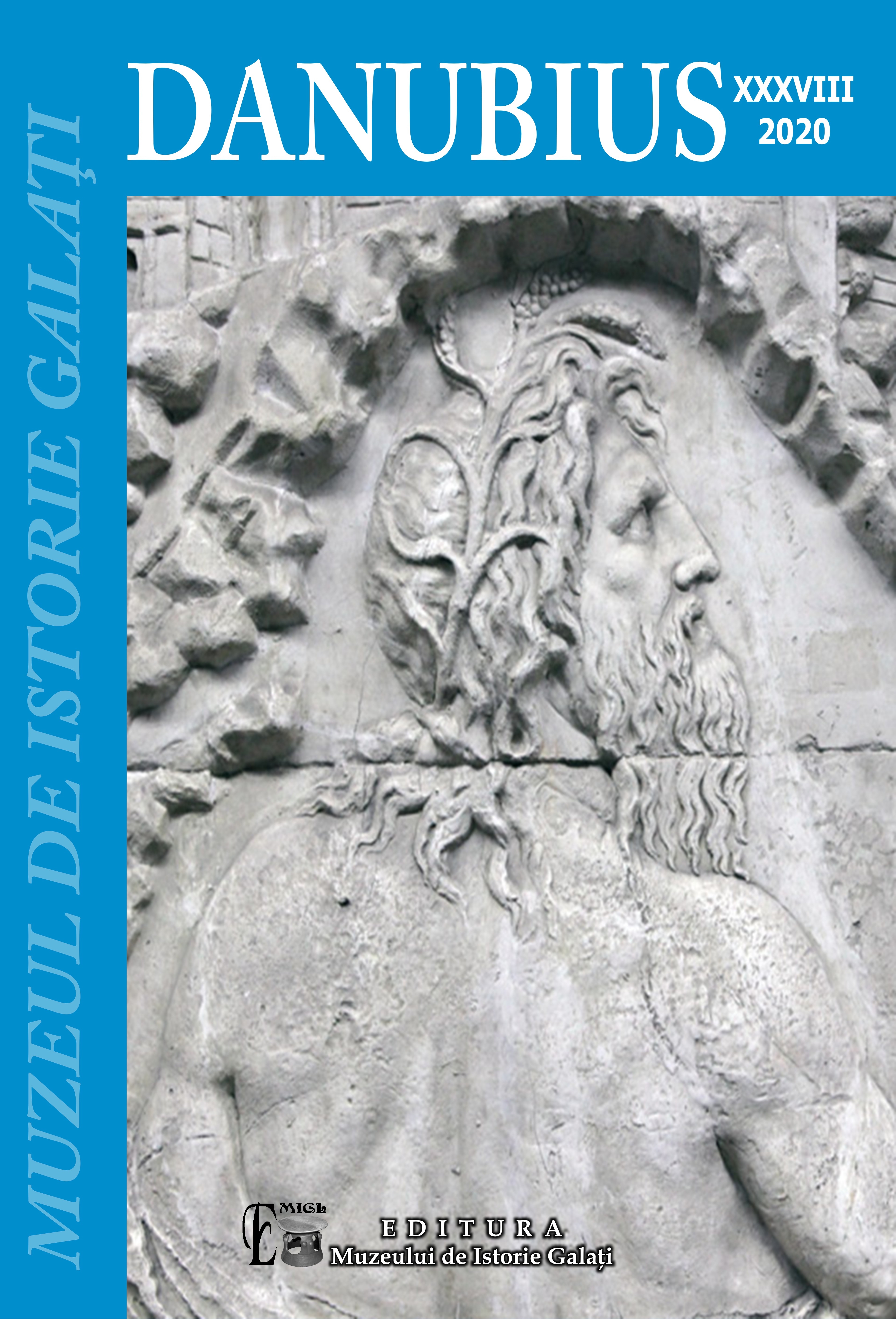
The Ministry of External Affairs owns an important fund of diplomatic documents (more than 8,000 linear meters of archives), issued by the central administration, by diplomatic missions and by Romanian consulates from abroad. The files are organized according to the problem they deal with (from 1 to 105), as they were classified in the Archives Nomenclatory created in 1909, according to the Austrian pattern. This system is in use even today, for classifying most of the archival funds. According to this system, we pay a special attention to Problem no. 33 – Jews Related Issues (1900-1948).The study aims at analysing the documents pertaining to this problem, which deal with the emigration of the Romanian Jews, at the end of the XIX-th century and the beginning of the next one.
More...
Regarded as a revisionist historian in the West, Patricia Crone (1945-2015), who wrote many books and articles on various subjects of early Islamic history, was a prolific researcher. The place and role of mawālī, in the Umayyad and Abbāsid society, has been one of the special topics she has been interested in since the very beginning of her academic life. Her works with a revisionist perspective have been faced many criticisms by colleagues, especially the western ones, because of her biased view of the sources written by Muslim authors, her methodology, and her results. However, it is obvious that Crone’s studies on mawālī have positively or negatively affected the Eastern and Western academics in Islamic studies. This article’s main purpose is to reveal Crone’s views on mawālī in Islamic society and draw an outline without comment as much as possible. The paper consists of three parts. In the first part, Crone’s revisionist perspective and her works on mawālī have been explained. In the second part, her distinctive views on the mawālī and its origin have been discussed. Finally, in the third part, her findings of the position of mawālī in social, political, military, and economic life during the Rāshidun Caliphs (11-41 / 632-661), the Umayyads (41-132 / 661-750), and the Abbāsids (132-656 / 750-1258) have been introduced. This study, which tackles Crone’s views on mawālī, aims to encourage the further studies on this subject.
More...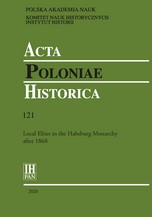
The multi-ethnic regions of the Habsburg Monarchy became increasingly perceived as places of instability and insecurity after the rise of competing national movements in the mid-nineteenth century. The antagonism between local national elites culminated after the Austro-Hungarian Compromise of 1867, as all pursued a course aimed at securing a favourable position. As actors of security, the local elites often and typically declared themselves and their respective nations to be existentially threatened and therefore with a legitimate claim to survive the challenges brought on by modern times. To investigate the security dilemmas of the local elites in two different regions of Austria-Hungary – namely in three city municipalities in Bács-Bodrog county in Southern Hungary; and in Vas, Sopron and Moson counties in western Hungary – this study combines methods of historical discourse analysis with approaches taken from security and nationalism studies as well as regional and local history.
More...
Review of: Rafał Rutkowski- Theodoricus, De antiquitate regum Norwagiensium. On the Old Norwegian Kings, ed. and comment. Egil Kraggerud, trans. Peter Fisher, The Institute for Comparative Research in Human Culture in Oslo, Oslo, 2018, XCVIII + 394 pp.; series B: Skrifter, 169 Urszula Augustyniak- Martin Faber, Sarmatismus. Die politische Ideologie des polnischen Adels im 16. und 17. Jahrhundert, Deutsches Historisches Institut Warschau, Wiesbaden, 2018, 526 pp.; series: Quellen und Studien, 35 Piotr Kuligowski - Morgane Labbé, La Nationalité, une histoire de chiffres. Politique et statistiques en Europe centrale (1848–1919), Presses de Sciences Po, Paris, 2019, 382 pp. Maciej Górny - Balázs Trencsényi, Michal Kopeček, Luka Lisjak Gabrijelčič, Maria Falina, Mónika Baár, and Maciej Janowski, A History of Modern Political Thought in East Central Europe, ii: Negotiating Modernity in the ‘Short Twentieth Century’ and Beyond, Part 1: 1918–1968; Part 2: 1968–2018, Oxford University Press, Oxford, 2018, 472 and 392 pp., selected bibliography, indices Joanna Wojdon - Joanna Hytrek-Hryciuk, Między prywatnym a publicznym. Życie codzienne we Wrocławiu w latach 1938–1944 [Between the Private and the Public. Everyday Life in Wrocław in the Years of 1938–1944], Via Nova, Wrocław, 2019, 319 pp. Stephan Lehnstaedt - Barbara Engelking and Jan Grabowski (eds), Dalej jest noc. Losy Żydów w wybranych powiatach okupowanej Polski [Night Without an End. Fate of Jews in Selected Counties of Occupied Poland], 2 vols., Stowarzyszenie Centrum Badań nad Zagładą Żydów, Warszawa, 2018, 871 + 835 pp. Joanna Nalewajko-Kulikov - Magdalena Ruta, Without Jews? Yiddish Literature in the People’s Republic of Poland on the Holocaust, Poland and Communism, edited by Jessica Taylor-Kucia, Jagiellonian University Press, Kraków, 2017, 452 pp.; series: Studies in Jewish Civilization in Poland, 2
More...
General Conventions of Polish Historians serve as a form of professionalisation of historical science and integration of the scholarly milieu. Since 1925, the event has been held under the auspices of Polish Historical Society [PTH]. But its history is even longer: the first Convention was organised by the Cracow-based Polish Academy of Arts and Sciences [PAU] on the 400th death anniversary of the chronicler Jan Długosz, in the year 1880. There was enough time, then, to determine the canon of objectives and purposes, and the concept(s) of their institutionalisation.
More...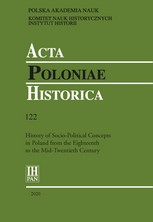
This article seeks to answer the question of whether the local conditions or determinants influence the socio-political language. Within the context of the nationwide discourse in the nineteenth-century Kingdom of Poland, an analysis follows how the concept of ‘intelligentsia’ functioned in the local press from the industrial city of Łódź. A source analysis leads to the conclusion that in the specific circumstances, of which the social mix was a constituent, certain notions of a defined meaning in the countrywide context may be interpreted in a manner divergent from the rule. As the social structure of Łódź was becoming more and more similar to that of Warsaw and other big cities, the differences in the definitions of the term ‘intelligentsia’ were gradually smoothening out.
More...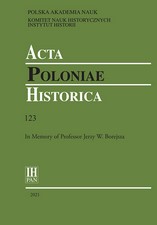
The article sets out to profile the results of preliminary research into the stances taken by two Warsaw Yiddish daily newspapers, Haynt and Der Moment, on the phenomenon of Italian fascism. These ranged from guarded and benevolent interest, and even a certain fascination, to categorical rejection, depending on the official stance of the fascist movement towards the Jews. The article discusses the initial ad hoc judgments on fascism made in the 1920s, opinions on Polish and Jewish emulators of Mussolini, with particular attention to Vladimir Jabotinsky and the Revisionist movement, and the opinions of Jewish political journalists on Mussolini’s volte-face regarding the Jews in the 1930s. A separate section is devoted to a series of 1938 reportage features showcasing the life of the Italian Jews in Fascist Italy.
More...
Review of: Mihai-D. Grigore- Gábor Kármán, Confession and Politics in the Principality of Transylvania 1644–1657, Göttingen, 2020, Vandenhoeck & Ruprecht, 302 pp.; series: Refo500 Academic Studies, 6 Łukasz Hajdrych - Kateryna Dysa, Ukrainian Witchcraft Trials. Volhynia, Podolia, and Ruthenia, 17th–18th Centuries, Budapest, 2020, Central European University Press, 264 pp., 22 ills Mikołaj Getka-Kenig - Tomasz Opaliński, Stan chłopski w Księstwie Warszawskim w świetle akt sądowych [The Peasant Estate in the Duchy of Warsaw, in Light of Court Files], Warszawa, 2020, Wydawnictwo DiG, 196 pp., tables, list of abbreviations, bibliog., annexes Malte Rolf - Aleksander Łupienko, Order in the Streets: The Political History of Warsaw’s Public Space in the First Half of the 19th Century, transl. from Polish by Jarek Garliński, Berlin, 2020, Peter Lang GmbH, 272 pp.; ills, bibliog., index; series: Geschichte – Erinnerung – Politik. Studies in History, Memory and Politics, 29 Aleksander Łupienko - Beate Stö rtkuhl and Rafał Makała (eds), Nicht nur Bauhaus: Netzwerke der Moderne in Mitteleuropa / Not Just Bauhaus: Networks of Modernity in Central Europe, Berlin, 2020, De Gruyter Oldenbourg, 400 pp., 200 ills; series: Schriften des Bundesinstituts für Kultur und Geschichte der Deutschen im östlichen Europa, 77 Grzegorz Krzywiec - Nils Fehlhaber, Netzwerke der “Achse Berlin–Rom”. Die Zusammenarbeit faschistischer und nationalsozialistischer Führungseliten 1933–1943, Köln, 2019, Böhlau Verlag, 343 pp.; series: Italien in der Moderne Aleksei Lokhmatov - Izabela Wagner, Bauman: A Biography, Cambridge, 2020, Polity Press, 500 pp., bibliog., appendix Rafał Stobiecki - Anna Sosnowska, Explaining Economic Backwardness. Post-1945 Polish Historians on Eastern Europe, Budapest–New York, 2019, CEU Press, 372 pp., bibliog., name and subject indices Natalia Jarska - Katarzyna Stańczak-Wiślicz, Piotr Perkowski, Małgorzata Fidelis, and Barbara Klich-Kluczewska, Kobiety w Polsce 1945–1989: Nowoczesność – równouprawnienie – komunizm [Women in Poland 1945–1989: Modernity – Equality – Communism], Kraków, 2020, Universitas, 520 pp., bibliog., ills and list thereof, index of personal names Anna Sosnowska - Béla Tomka, Austerities and Aspirations. A Comparative History of Growth, Consumption, and Quality of Life in East Central Europe since 1945, New York, 2020, Central European University Press, 456 pp., appendix, notes, bibliog., index
More...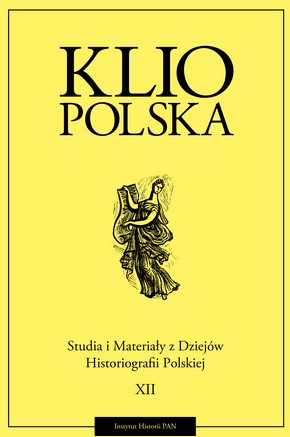
This article presents the person of Daniel Beavois – a distinguished student of the Polish-Russian-Ukrainian relations in the post-partitioned era – and his contacts with the editors of the Paris ‘Kultura’. The author’s concern is also with the question of how Beavois’ work on the Polish nobility in Ukraine in the years 1831–63 was received among Polish post-war exiles, and with Beavois’ postcolonial diagnosis that emerged on the margins of his research and concerned the tensions to which Polish national identity was subject in Poland’s old eastern borderland (the so-called Kresy).
More...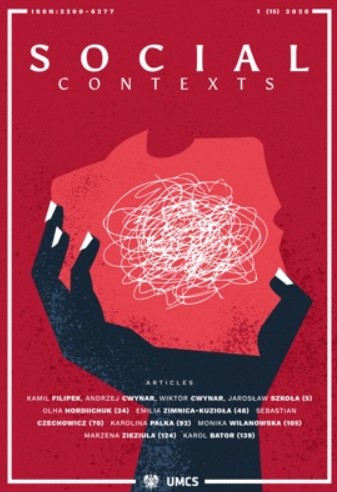
The subject of article is transformation as a multilevel social phenomenon, experience of transformation and modernization of Polish society (in the period from 1989 to the present day, including the turning point of the reforms in 1999 and the context of Poland’s membership in NATO and the EU) and changes in its mental characteristics. Mental qualities play one of the most important roles in the processes of social transformation: they have their share in shaping the perception and implementation of attitudes, correspond to values, established norms of behavior. At the same time, they can significantly complicate the rapid mastery of innovation (both consciously and subconsciously), because one of the main functions of mentality is to counteract violent revolutionary reformist transformations and to promote paths of evolutionary cultural, social and other changes. The study of mental features should clarify which of them were helpful, and which rather the opposite – hindered at the stage of reforms and social changes and the creation of civil society. These considerations are based on the assumption that destructive mental traits are mainly associated with many years of subjecting Poland to the power of other countries, especially the Soviet Union, which led to negative state experiences, which in turn translates into a lack of liberal traditions and a low level of civic awareness of society. A very important task that Polish society faces is abandoning outdated Soviet behavior, increasing the level of responsibility and activity, mutual trust and cooperation, developing social activity, strengthening civil society, which is the engine of change and the controller of local and state self-government.
More...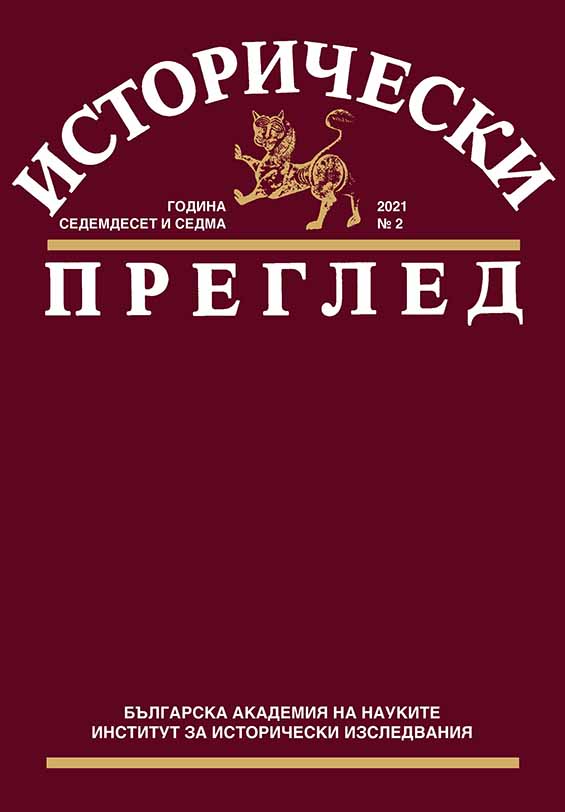
At the April plenum of the Central Committee (CC) of the Bulgarian Communist Party (BCP) in 1956, a commission was elected to investigate the case of Traicho Kostov and the related trials. Georgi Tsankov, a member of the Politburo of the CC of the BCP and Minister of the Interior since January 6, 1951, also testified before this commission. It is clear from his testimonies that political repression and perversion were softened after 1951, but political trials, new arrests of party and military activists continued to be held, and members of the CC of the BCP were subjected to agency recruitment. The expulsions of “politically inconvenient people” from the border areas and from the big cities of the country and the deportations to labor camps did not stop. G. Tsankov blamed the Secretary General of the CC of the BCP and Prime Minister Valko Chervenkov, the Soviet advisers of the Ministry of Interior, and the investigators from the Bulgarian State Security for the “violations of the socialist legality”.
More...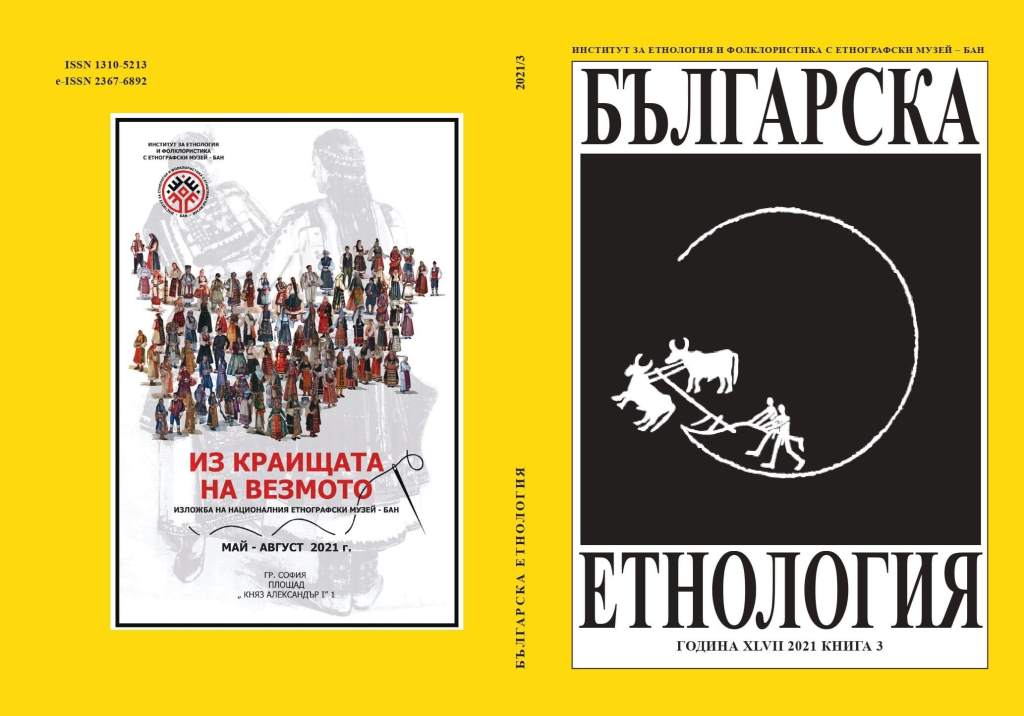
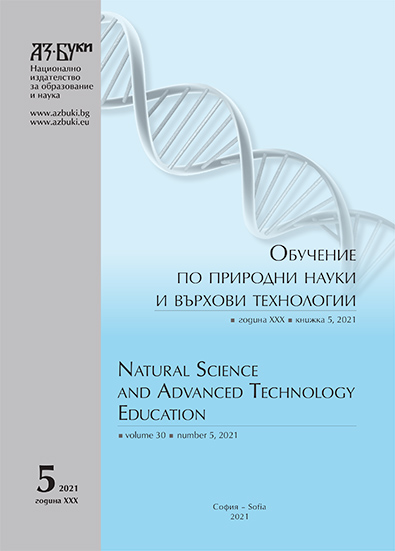
Geber (Latinized name of Jabir ibn Hayyan (c. 721 – c. 815)) is among the most notable representatives of medieval chemistry. The article, dedicated to the 1300th anniversary of his birth, tries to depict his work as the beginning and groundwork for Arabic alchemy, also serving as a push for the formation of chemistry in the future. The article touches upon his life, characteristics, evaluation of his works, doubts about his identity and authorship. His influences are examined and his achievements in the area of metallurgy (sulfur-mercury theory, characterizing all known metals), knowledge of `secret` (stimulating the transmutation of metals) substances, mineral acids, salts, chemical processes and apparatus, his contributions to practical chemistry prove the broadness of his interests. His rational and practical approach is acknowledged and also his “outer” spiritualism present in the terminology inherited by the authors of Alexandria. The legacy he leaves – his authority, influence on the development of chemistry and followers – Arabic medical alchemists. In the conclusion his services to science and civilization are summarized.
More...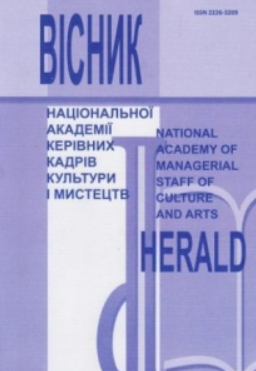
The purpose of the article is to determine and explore the relationship and interaction of historical events (Russian Revolution of 1917 and its consequences; World War II (1939-1945); anti-Roma policy of Nazism and the Holocaust; the collapse of the USSR) on the formation of Roma culture in the context of socio-cultural space of Ukraine XXI century. The methodology is based on the use of historical, socio-cultural methods to reveal the historical truth in the formation of Roma culture in different chronological periods. The scientific novelty is that for the first time in chronological order the relationship and interaction of historical events of the ХХ century (the Russian Revolution of 1917 and its consequences; World War II (1939-1945); anti-Roma policy of Nazism and the Holocaust; the collapse of the USSR) and the formation of Roma culture in the context of the socio-cultural space of Ukraine in the XXI century, determines the origin, formation, current state, and influence of Roma art on the development of Ukrainian culture of the XXI century. Conclusions. Historical events, from ancient times to the present, including the Russian Revolution of 1917 and its consequences, World War II (1939-1945), anti-Roma policies of Nazism, the Holocaust, the collapse of the USSR, had a relationship and decisive influence on the formation of Roma culture in the context of the socio-cultural space of Ukraine of the XXI century. The first Holodomor became a motive for strengthening the Ukrainian national consciousness, the settlement of Roma on the territory of Ukraine, and uniting the joint efforts of Ukrainians to resist the Soviet government. During the Second World War, the Roma did not lose their optimism and thirst for creativity, raised the fighting spirit with military songs, dances, and amateur front-line concerts. It was emphasized that a significant number of Roma were killed in the punitive actions of the Nazi occupation regime in Ukraine. In the middle of the twentieth century, no book in the Romani language (neither artistic nor scientific) was published in the USSR, and Romani schools were closed. The development of Roma culture was formal. After the collapse of the USSR, Roma artists were able to tour freely around the world and integrate their culture without any fear of oppression of their creative activities, continuing their development in the socio-cultural space of Ukraine in the XXI century.
More...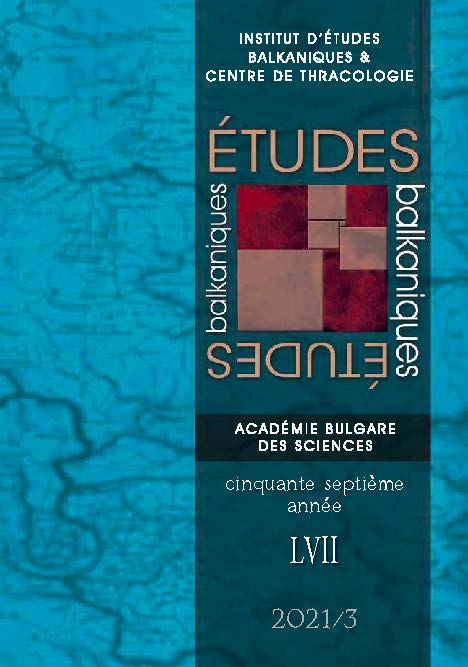
International order is one of the key concepts of international relations of the 19th and 20th centuries following the wars and the shifting of major paradigms. When the Cold War ended it became more relevant for the Balkans since the balance of power was no longer the most suitable model for regional peace, following the dangerous ethnic tensions, and new realities. The paper intents to explain the main values and characteristics of the contemporary international order, specifically since the collapse of the balance of power; and to analyze what this means for the Balkans, both in terms of international involvement in the Balkans, and the positioning of Balkan states in the system of international relations? The study identifies the main patterns that shape contemporary international order, noting the increased impact of globalization, and shifting of the models of international order towards the stability, geopolitical relevance, and development of the Balkans.
More...